Montana's State Emergency Response Commission
May 9, 2024 SERC Meeting Teams Invite and Agenda
The State Emergency Response Commission (SERC) was established by federal law and Montana Code Annotated (MCA) and is tasked with the implementation of the Emergency Planning and Community Right to Know Act (EPRCA) in Montana.
SERC Responsibilities include:
- Designation of local emergency planning districts.
- Receive and record initial appointment of and revisions to LEPC/TEPC membership.
- Receive and review local hazardous materials emergency response plans.
- Administer and coordinate responsibilities of representative SERC members for implementing the EPCRA program in Montana.
- Establish procedures for the receipt of, management and access to all notifications, reports, plans, and all other information required by EPCRA.
- Coordination with EPA on EPCRA implementation.
- Appointment of ad hoc committees and working groups.
- Review State Hazardous Materials response plans annually.
- Monitor the activities and membership of Local Emergency Planning Committees (LEPCs).
- Ensure LEPCs receive and record documented reports submitted under the Emergency Planning and Community Right-to-Know Act (EPCRA) and provide information required by law.
- Monitor resources and activities of state agencies related to respective roles and responsibilities as specified in the MT Emergency Response Framework (MERF) and applicable State Hazardous Materials Plan.
- Coordinates Regional Hazardous Materials Team reimbursements.
SERC members are appointed by the governor. The eight-member commission advises the Governor on emergency response and preparedness issues relevant to administering state and federal requirements. The SERC may select members, or other subject matter experts to serve on committees and subcommittees set up by the commission.
The SERC recognizes and works with several committees which are as follows:
- Steering Committee
- Hazardous Materials Committee
- All-Hazards Response Committee
- Senior Advisory Committee (SAC)
- Montana Emergency Response Framework - Emergency Support Functions (MERF-ESF) Committee
- Emergency Alert System / Integrated Public Alert and Warning System (EAS/IPAWS) Committee
The service of individuals serving on the SERC and its associated committees to Montana is important and valued. The advice and decisions made by the SERC and its associated committees make Montana a better place to live and work. Members can find information and background materials in the SERC Members Packet.
The SERC is continually reviewing its mission to see what improvements or changes should be made to strengthen our emergency response capabilities. Making Montana a secure, disaster resilient state requires many stakeholders finding ways to adequately prepare and respond to emergencies. We strive to listen to the whole community so that we ensure the SERC and committees are responsive to their needs.
Local Emergency Planning Committees (LEPCs) and Tribal Emergency Planning Committees (TERCs) are federally mandated entities composed of state and local officials, business representatives and members of the press.
LEPC membership must have representation from a cross-section of the community, which means, at a minimum:
- State and local officials
- Local elected officials
- Law enforcement
- Emergency management
- Fire fighting
- First aid
- Health professionals
- Local environmental agencies
- Hospitals
- Transportation personnel
- Broadcast and print media
- Community groups
- Owners and operators of facilities subject to the requirements of EPCRA
LEPC/TERC Responsibilities are:
- Develop an emergency response plan.
- Review the response plan at least annually.
- Serve as a repository for hazardous materials information in their community.
- Provide information about chemicals in the community to citizens.
- Perform outreach functions to include hazardous materials awareness.
LEPC/TERC response plans must include nine (9) planning elements:
The LEPC plan must include, at a minimum, the nine planning requirements outlined in EPCRA:
- Identification of facilities that possess extremely hazardous substances and the transportation routes along which these substances may move.
- Emergency response procedures.
- Designation of a community emergency coordinator and facility emergency coordinators
- Procedures providing reliable, effective, and timely notification.
- Methods for determining the occurrence of a release, and the area or population likely to be affected.
- A description of emergency equipment and facilities in the community.
- Evacuation plans.
- Training programs.
- Methods and schedules for exercising the plan.
The EPA developed a National Handbook as a resource for local jurisdictions to strengthen community preparedness for accidental chemical releases. It compiles and expands upon existing guidance materials for the Emergency Planning and Community Right-to-Know Act (EPCRA) and its amendments under the America’s Water Infrastructure Act (AWIA) of 2018.
The EPA's National LEPC-TEPC handbook can be found within the EPA website here.
If you have any questions regarding the SERC or LEPC/TERC materials, please contact the SERC at mtserc@mt.gov or contact Disaster and Emergency Services at (406) 324-4777.
Montana LEPC-TEPC Handbook (coming soon)
Letter from EPA to All State Emergency Response Commissions
Chemical Emergency Preparedness and Prevention on Tribal Lands

